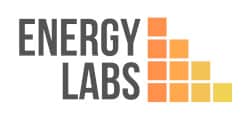Are you tired of paying too much on energy bills to heat your hot water? Installing a hot water heat pump can be the perfect solution for reducing your building’s energy usage, as well as taking some of the strain off of your wallet.
What is a Hot Water Heat Pump?
A hot water heat pump is an energy-efficient device that uses electricity and the outdoor air to heat water for use in buildings. The heat pump works by extracting warmth from the outside air and transferring it into the tanks that store hot water. This process requires much less electricity than traditional methods of heating hot water, such as electric or gas-powered systems.
What are the Benefits?
Installing a hot water heat pump can provide many benefits, including:
• Reduced energy costs – Heat pumps use significantly less electricity than traditional methods, so you can save money by installing one in your home or business.
• Improved comfort – Heat pumps maintain a consistent temperature in your hot water supply, unlike traditional systems which can cause fluctuations in temperature depending on how much hot water is being used at any given time.
• Low maintenance – Heat pumps require minimal maintenance and are designed to last for many years with little need for repair or replacement.
• Eco-friendly – Heat pumps are an environmentally friendly option for heating hot water, as they use no fossil fuels and have zero emissions.
How Do You Install One?
Installing a residential hot water heat pump is relatively simple and straightforward if you have some basic DIY skills. Here’s what you need to do:
• Choose an appropriate location – You will need to install the unit in an area where it will get plenty of air circulation and direct sunlight, such as on an outside wall or on the roof of your house.
• Prepare the installation area – Make sure that you have enough space around the unit to allow for adequate ventilation and easy access for servicing and repairs. It’s also important that you protect any nearby surfaces with waterproofing materials before installation begins.
• Connect power source – Connect your new heat pump to a dedicated power source, such as an electrical outlet or circuit breaker box, to ensure safe operation of the unit. Make sure that all wiring conforms to local codes before plugging it in!
• Install insulation – If necessary, add insulation around pipes leading from the unit to ensure maximum efficiency when heating up your hot water supply.
• Test run – Once everything has been installed correctly, turn on the unit and check that it is working properly before leaving it running on its own.
With these steps completed correctly, you should soon be enjoying significantly lower energy bills thanks to efficient heating with your new hot water heat pump!
